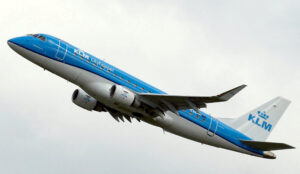July 21, 2023
SGS has released research showing in unprecedented detail the spread of radioactive fallout from 94 continental U.S. atmospheric nuclear weapon tests, including the first nuclear weapon test – the 16 July 1945 Trinity explosion that was a key part of the Manhattan Project. This work has been reported in The New York Times.
The new model shows the nuclear explosions carried out in New Mexico and Nevada between 1945 and 1962 led to widespread radioactive contamination, with Trinity making a significant contribution to exposure in New Mexico, in neighboring states, and reaching 46 of the 48 contiguous United States as well as Canada and Mexico. The study also documents significant deposition in Nevada, Utah, Wyoming, Colorado, Arizona and Idaho, as well as dozens of federally recognized tribal lands.
The research provides estimates of the deposition of radioactivity over 10 days following the detonation of the Trinity nuclear explosion, and for five days subsequent to the atmospheric tests in Nevada. It highlights that significant radioactive deposition took place in locations in New Mexico and on federally recognized tribal lands not covered by the U.S. Radiation Exposure Compensation Act. It also reveals that plutonium carried by the wind from the Trinity test explosion reached Crawford Lake in Canada on July 20, 1945. The presence of plutonium in Crawford Lake sediments has been proposed as one marker for the beginning of the Anthropocene epoch.
The research team is led by Sébastien Philippe of SGS, together with Susan Alzner and Megan Smith of shift7, Mason Grimshaw of The Earth Genome, and Gilbert P. Compo from the University of Colorado Boulder and the NOAA Earth System Research Laboratories. The article Fallout from U.S. atmospheric nuclear tests in New Mexico and Nevada (1945-1962), which has been submitted for formal peer review, is part of an SGS research effort led Sébastien Philippe by over the past three years to model the radiological consequences of nuclear weapon testing and use on people and the planet.This research has previously focused on reconstructing the radiological and environmental legacies of past French atmospheric nuclear tests in the Pacific.
The research project integrates state of the art computational tools for simulating nuclear explosion mushroom clouds and the long-range atmospheric transport of radioactive particles, historical weather reanalysis data of high spatial and temporal resolution, and declassified archival information on nuclear tests. The tools and approach being developed will enable improved modeling of the effects of atmospheric nuclear weapon testing programs globally, and make possible new assessments of the harms to populations and environments exposed to nuclear testing.
Source: https://sgs.princeton.edu/news-announcements/news-2023-07-21




